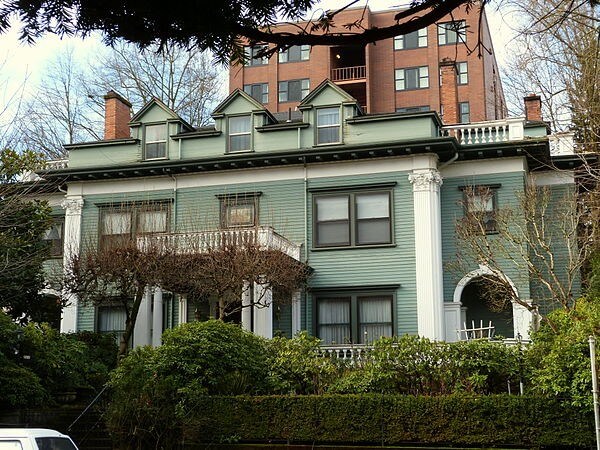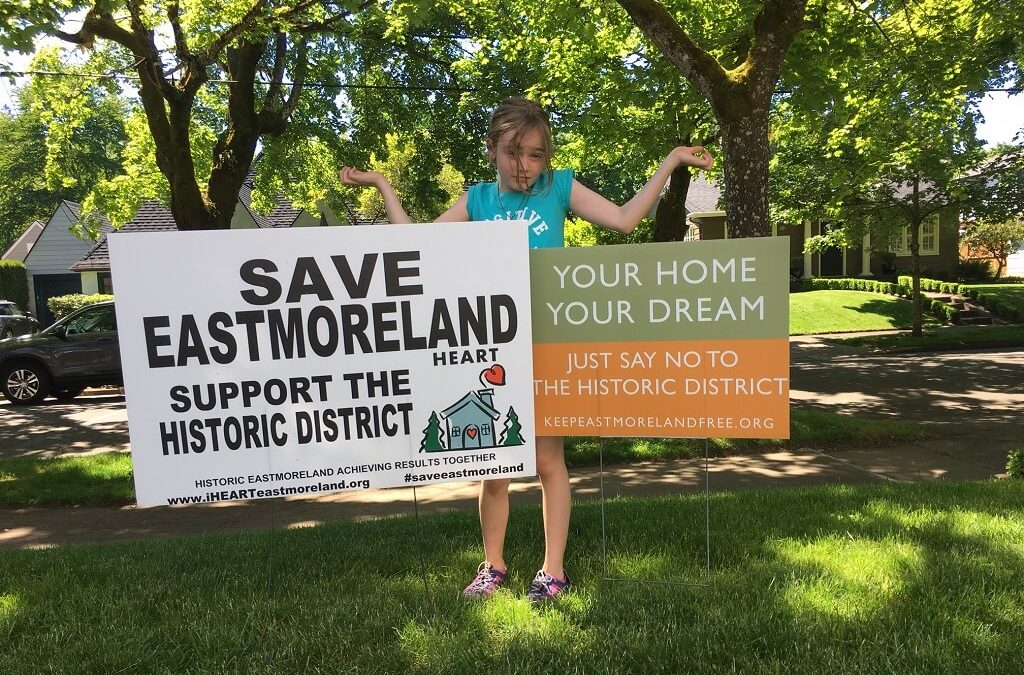Richard De Wolf, Arciform
A Life Dedicated to Restoring Vintage Structures
This week I stopped by local design-build company, Arciform, and interviewed the owner, Richard De Wolf. Looking back on all of these episodes, this has been the most helpful and informative to me. This might be because Richard and I somehow speak the same language of homes.
Richard has made his career and lifestyle out of a love for vintage structures. The career aspect is apparent since he has a 70-person restoration and design company specializing in vintage and historic structures that “sometimes sneaks modern in there as well.” He’s a current board member of Restore Oregon and past board member of the Architectural Heritage Center.
The lifestyle aspect gets more interesting. Richard and his wife/business partner, Anne De Wolf, recently purchased a home in Northwest Portland’s Alphabet District. It’s a historic landmark in a historic district (HD) and on the national historic registry. Take that in for a moment.
This guy knows his way around an HD. But what’s most important is the seven-story low income building perched directly behind his home. To say that you can’t have diversity and a mix of income levels living in an HD is untrue according to Richard. In fact, he says his best neighbors live in this low income building. Northwest has been an HD for a long time and it’s representative of so much more than just pretty homes.

Richard De Wolf’s house is historically designated, in a historic district and a historical landmark. Additionally, it is next to low-income housing.
Since Richard is personally remodeling his historic home and his company has done so much HD work, he really puts my mind at ease. He reminds me that the HD only has issue with what’s happening on the exterior of the home, on what can be seen from the street, not the back or sides (unless you’re a corner lot). So, Richard says, some of the energy efficiency complaints we’ve been hearing are invalid. Of course people should incorporate new energy-efficient furnaces and water heaters into their historic structures. But both of those examples represent changes to the inside of the home and therefore out of HD review.
When we’re talking about exterior changes to the home, we’re mainly talking about windows, siding and solar panels. Our conversation goes into all of this. Especially windows. According to Richard you’ll never be able to cut your energy bill down by a third (as common myth suggests) if you replace all your windows with new double hung windows. It’s simply not possible.
Richard actually has another company, called Versatile Wood Products, so it would behoove him to sell us some new windows. However, he’s telling us NOT to buy new windows just for energy efficiency purposes if our existing windows seem to be operating fine. He’s that kind of guy.
I mentioned that before I got to know him, I was surprised that his company was gaga over home restoration, rather than just remodeling as needed without much thought about original charm. I figured remodeling with the home’s character in mind was harder logistically and more expensive for both the homeowner and remodeler. Richard explained that it’s easier to maintain a building than it is to change it.
“Historic windows will last as long as you can maintain them, while newer materials will only last until their time for the landfill,” he says. “The older materials are easier to work with. Wood is easier to maintain.”
Richard muses that most people who purchase an older home aren’t going to want to completely change it, which is what the design review process attempts to control. Maintaining and repairing the home’s exterior isn’t an HD concern. It’s about big additions or remodels. When I asked if I’d have to pay 250 “bucks” for someone to tell me that it’s okay to switch my front door to a more historically appropriate style, Richard hinted that we only have to involve the HD if a permit is required — warning that he is not a lawyer. So any exterior work completed by homeowners or contractors may be done without involving the HD if a permit isn’t already required.
When I wondered if the HD would slow our remodeling projects down, Richard advises that all big projects require planning so the HD is addressed in the beginning when the exterior envelope is also being reviewed. “The only thing HDs slow down is the demolition of affordable housing,” he says.
The only regulations an Eastmoreland HD would immediately put into place regard demolitions. Then 18 months to three years later, we’d start looking at the design review process as a neighborhood, collectively deciding our unique process.
When I asked what he thought the biggest drawback to an HD was, Richard confided that running the extra paperwork through will be annoying for contractors who haven’t done it before. But after the first couple of times it will become second-nature, just like getting a permit. The homeowner wouldn’t really feel much burden because again, you’d only involve the HD when undertaking big changes, which most of us use contractors for. So the extra hurdles would fall to them.
Even if the HD doesn’t go through, listen to this episode if you’re planning a future remodel because we discuss common remodeling myths towards the end. Richard tells homeowners how to protect themselves, offers cost considerations and brings energy-efficiency tips into the entire conversation.
Richard leaves us with Arciform’s mission, which is Share Your Story. “We believe every house and building has a story. Thank you for letting me share mine,” he ends.
This is Episode 5 of The Eastmoreland Project, the first series of StreetTalk, a podcast about Portland’s ever-changing communal landscape.









